
Mealybugs, scale, fungus gnats, and spider mites are pests that many succulent owners will struggle with at some point or another. Fortunately, they're not too difficult to deal with.
Jump to:
Preventative Measures
They say the best offense is a good defense, and we can apply that to fat plants as well! It is much preferable to avoid disease than to attempt treatment. Here are a couple of tips for keeping your plants healthy!
Plant Hygiene
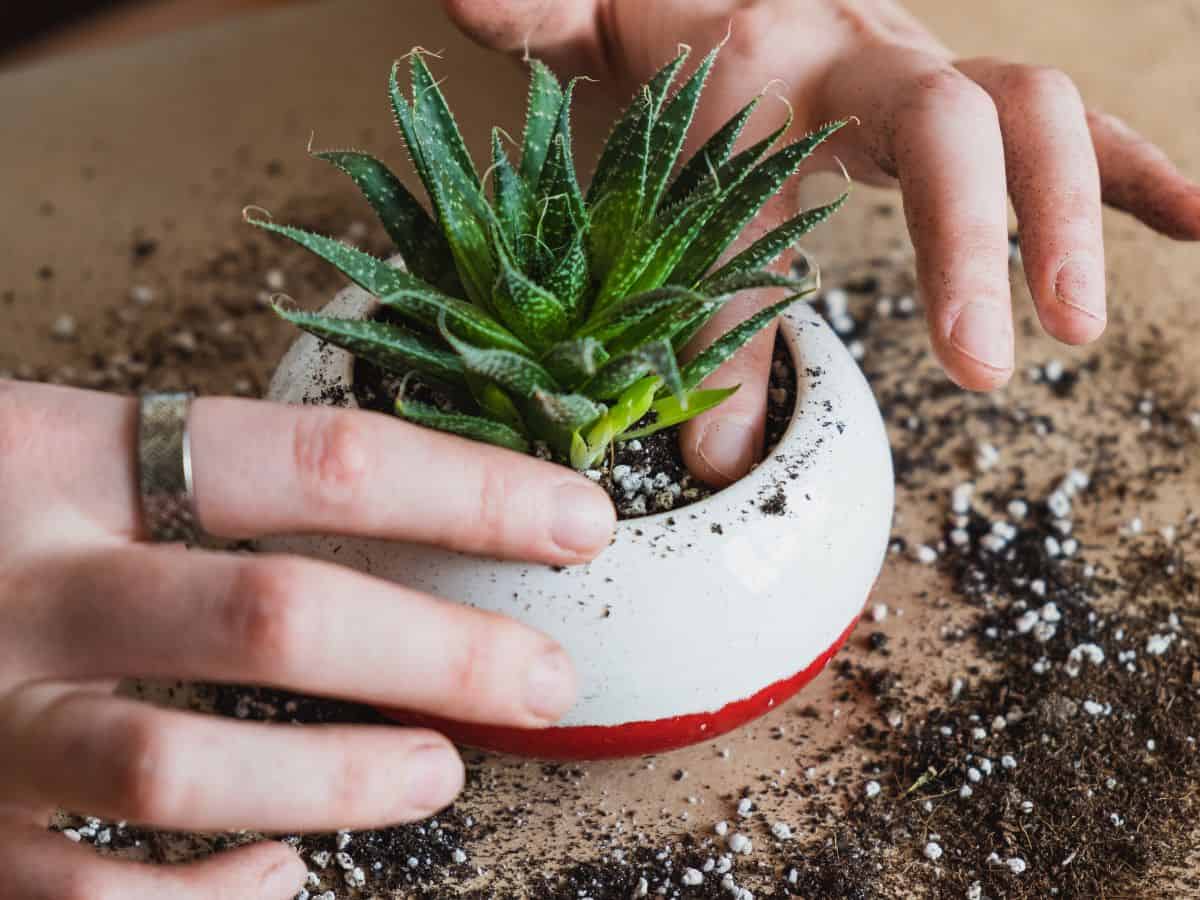
This is your first line of defense against all manner of diseases and pests. An integral part of preventing illness is to keep your plant and its pot clean. What does clean mean?
- remove dead leaves and flowers
- don't allow water to sit and stagnate
- remove foreign growth (stray seedings and such)
- ensure loose, aerated soil
When conditions around your plant or in a pot are poor, it invites fungi, bacteria, and animal pests. It also reduces the plant's ability to defend itself, making it even more vulnerable. A good time to check your plants for general health and cleanliness is immediately before watering.
Read Also: How to Get Rid of White Mites
Quarantine
Upon acquiring new plants, my first impulse is to introduce them to their new family. However, those new plants could be hiding pests and fungi, so be sure to quarantine new plants for at least two weeks. Place them in a different area of your home, or hold off on planting them in your garden, so that you don't accidentally expose your established plants to disease. Succulents that come from home improvement stores like Lowes or Home Depot are especially notorious for introducing disease because they are not cared for adequately. A couple of weeks is usually long enough for any latent pests to become apparent, which will allow you to treat them before they spread to the rest of your plants.
Read Related Reading: How and when to fertilize succulents
Pest Treatment
When all else fails and you find an infestation on your hands, you need to take immediate action to prevent further spreading and damage to your succulents!
A note: While a valid method of control, Sublime Succulents do not endorse the use of pesticides. Pesticides are not only bad for the bugs - they damage the environment and can even harm your plants. Please consider these other methods of control (which are often much cheaper).
No products found.
Likewise, several biological control methods exist - namely, introducing predators to kill the pests. Sublime Succulents also asks that you refrain from this method due to the risk of spreading non-native species outside of your garden and greenhouse. It's also rather ineffective on a small scale; it wouldn't work very well anywhere other than a greenhouse.
Read Also:
- How to Get Rid of Fungus Gnats
- Saving Succulents from Snails and Slugs
- How to Treat Spider Mites on Succulents and Cacti
Mealybugs
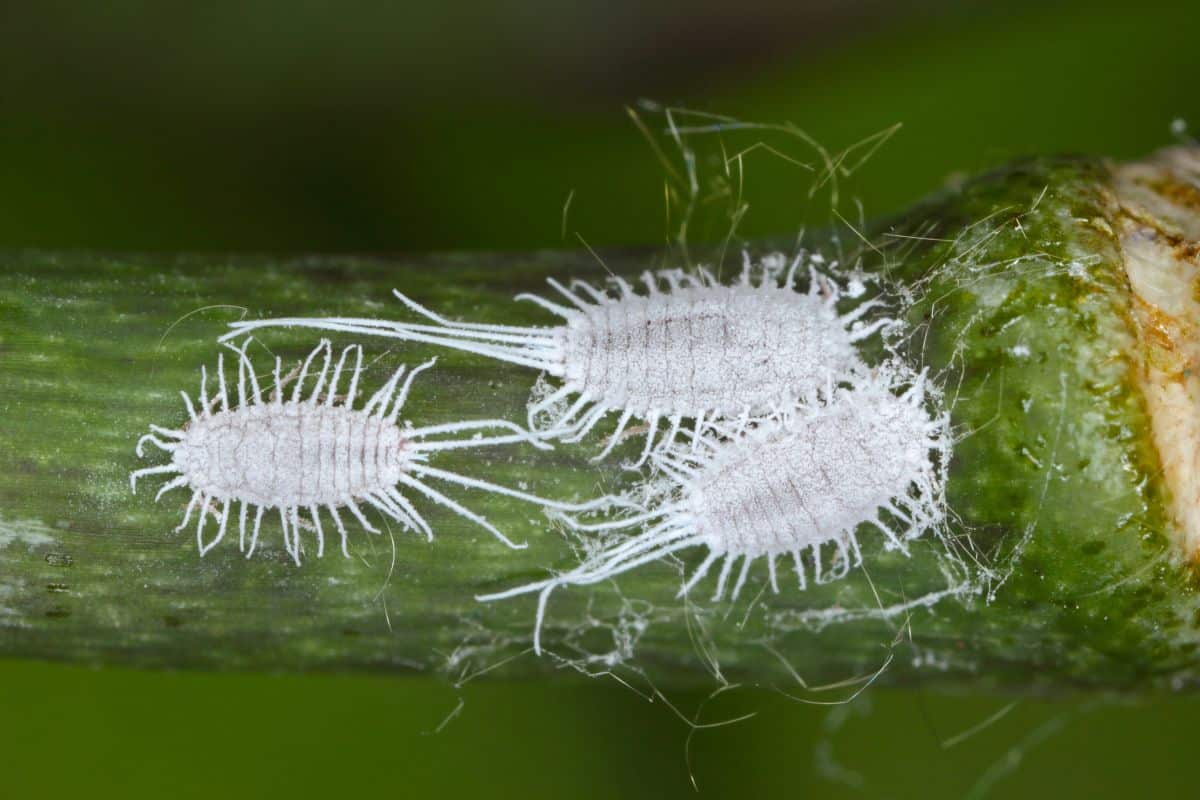
One of the most common types of pests, a multitude of species of mealybug likes to prey on succulents. They are quite small, only a couple of millimeters long. Unfortunately, it means that they are difficult to detect until there exists a sizable population. Their color varies from white to gray to brown and they have a wispy, cottony appearance. Some species deposit honeydew on your plant - a sticky sweet substance that is often consumed by ants. If you notice little clear droplets of a sticky substance or an abundance of ants, you probably have a mealybug infestation. Ants, while not inherently harmful, will also swarm your plants in an effort to eat the honeydew produced by these bugs.
Fortunately, it's not too difficult to remove mealybugs. A dilute solution (about 1:3) of methylated spirits or rubbing alcohol will be sufficient to kill them. Apply topically via a Q-tip or spray it on to your plant if the infestation warrants it. Be warned: alcohol isn't good for your plant, so try to use it sparingly. After several treatments, uproot your plant and clean it under a powerful jet of water. This washes off any remaining mealybugs (or their corpses), and gives you a chance to repot. Mealybugs sometimes lay their eggs in the soil, so you need to ensure you have clean, fresh soil to replant with.
Scale
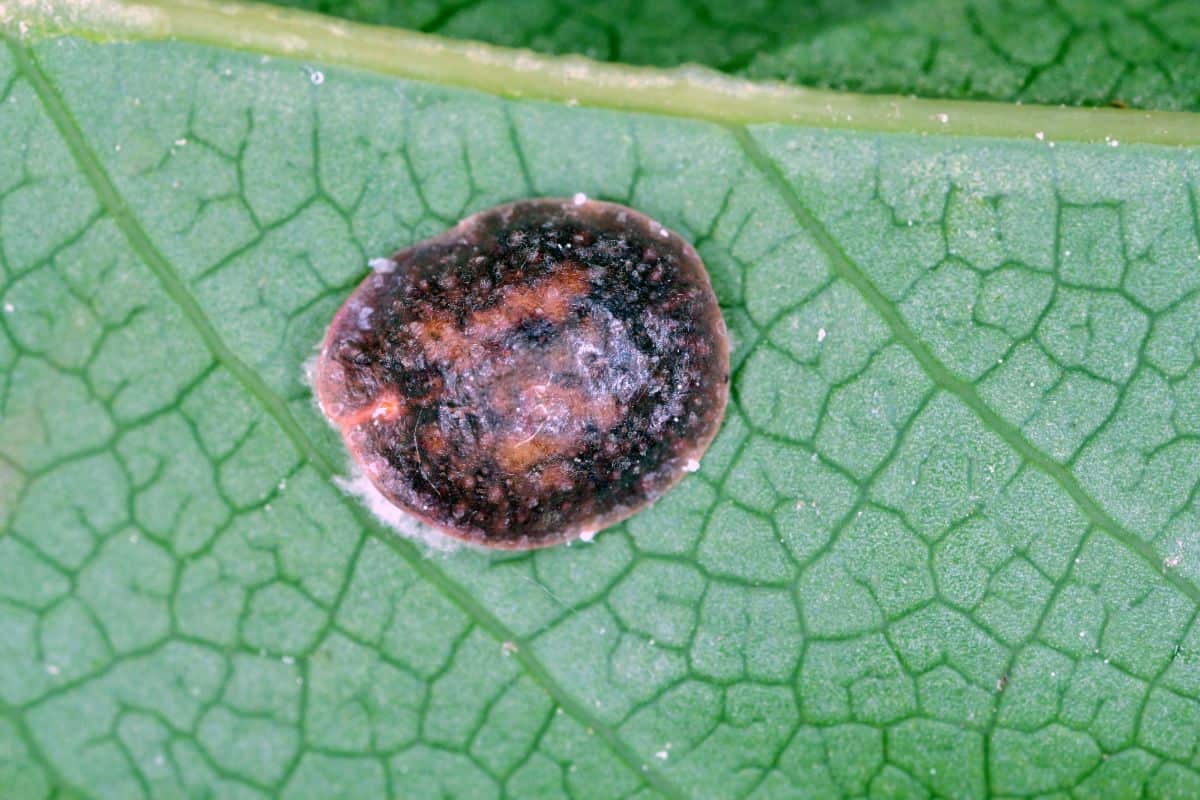
This plant pest is very easy to identify once you know what to look for. They are small, a centimeter or less, brown, or gray "scales" that appear on the stem and leaves of your plant. The scale is flat or slightly raised and ovular in shape. It has a waxy sheen that distinguishes it from stems. Once removed, they tend to leave a scar on your poor succulent.
If they are few in number, feel free to scrape them off with a fingernail or tweezers. Rubbing alcohol will usually kill them too, but it may need to be more potent than the solution you used for mealybugs. If that doesn't work, you might have to remove the branch or even the entire plant. Sacrifices must be made to protect the rest of your plants.
Fungus Gnats
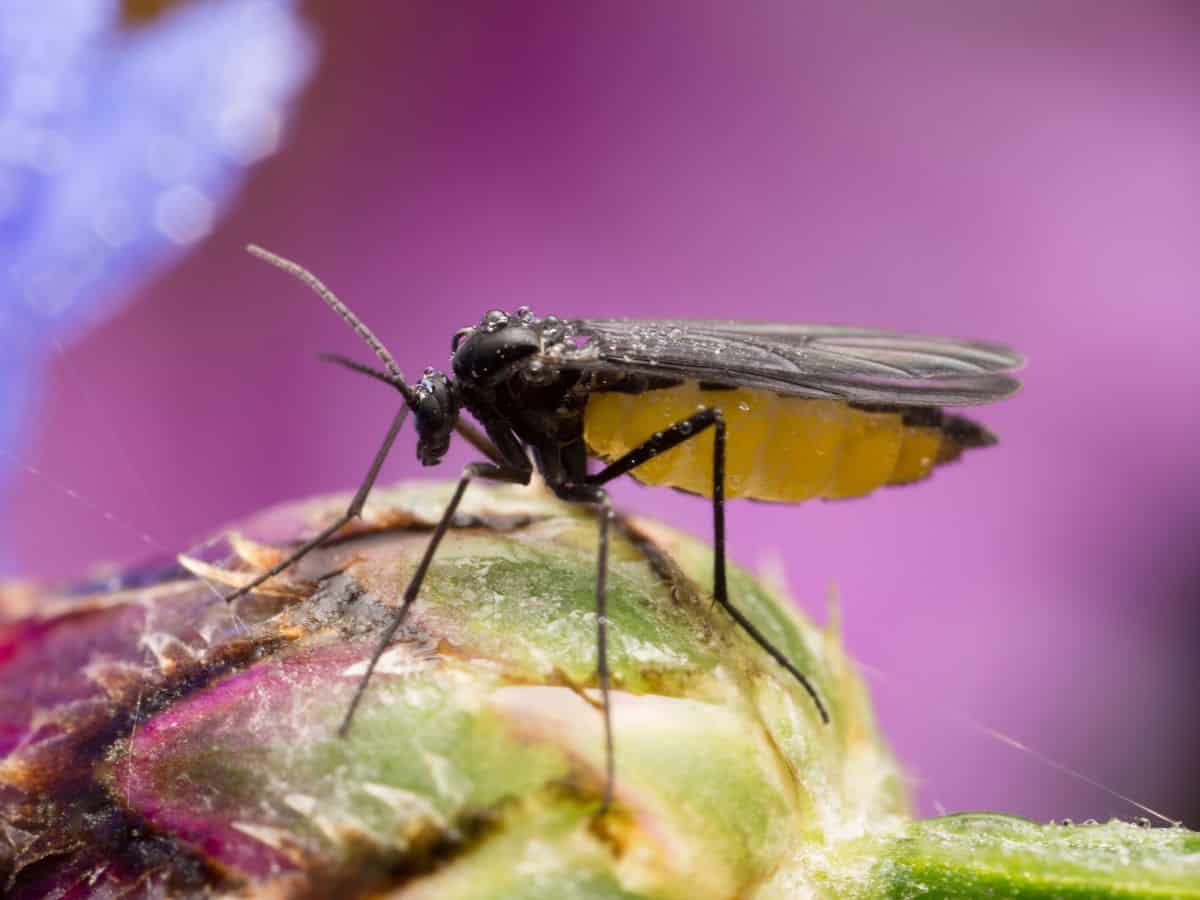
These have several names, such as sciarid fly and soil midge, but they're quite apparent. Somewhat fat and rather slow, they are much like fruit flies except they hang out in your plants! The adult flies don't harm the plants, but their larva can eat the roots. Not to mention - they're quite unsightly. They're easy to find when interacting with your plants as they will rise from the soil and fly away if disturbed.
As they don't do much harm to succulents, exterminating these pests isn't urgent. Making an effort to kill all of the adults, either by squashing or using flypaper, is generally enough to destroy the population in a couple of weeks. If you need an immediate solution you have to kill all the adults as well as uproot, thoroughly wash, and repot your plant. That's the only way to ensure you get all of their larvae too.
Spider Mites
Perhaps the toughest pest to both find and treat, the spider mite is a scourge of succulents everywhere. These red mites are practically microscopic - you'd have trouble finding them with your naked eye. Instead, look for yellowish-brown scarring on your plants. This is an indicator that spider mites have been parasitizing them. Very fine, wispy webs are sometimes also an indicator of spider mites. Try not to confuse them with their larger cousins, regular old red mites. These are usually clearly visible to the naked eye and don't harm your plants.
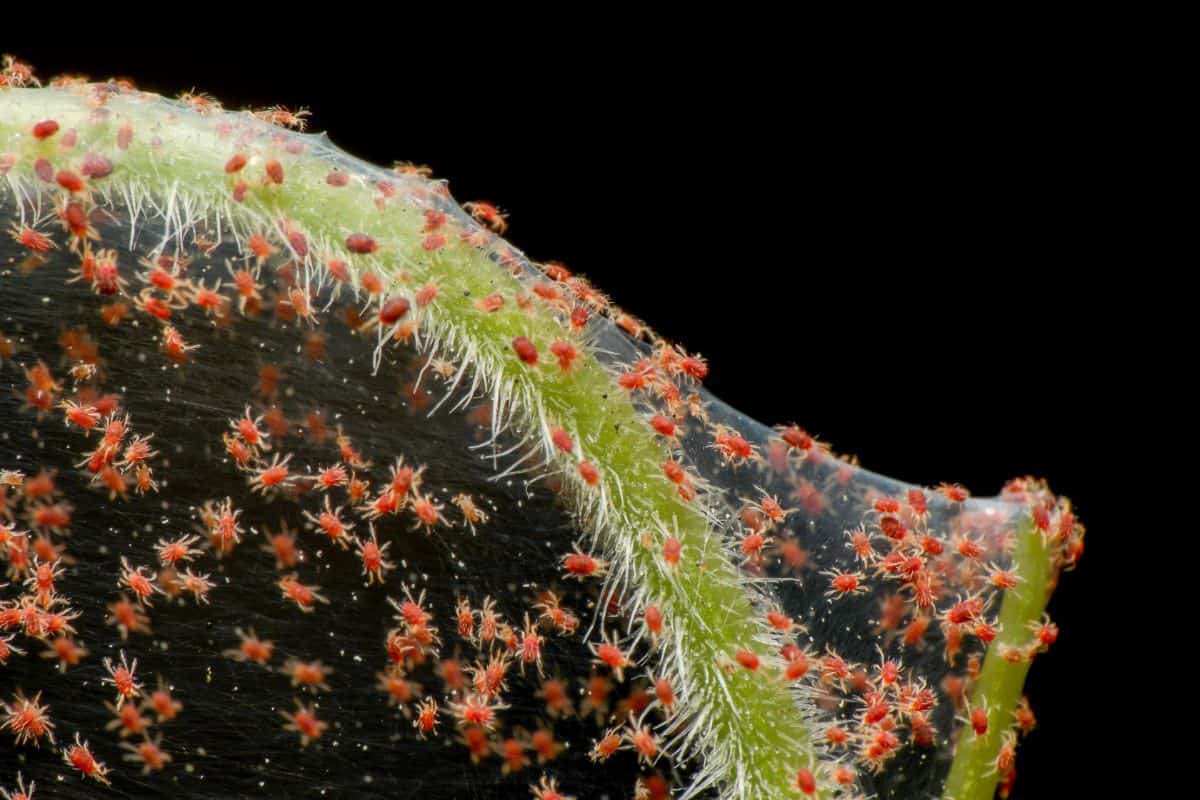
Neem oil is a natural oil that repels all kinds of insects and arachnids and is known to be effective against spider mites. It is not harmful to plants, so you can apply it daily until the infestation is gone. Otherwise, the old standby of a high-pressure wash is the best way to get rid of spider mites. They also have natural predators, such as ladybugs. If you feel compelled to use a biological control, ensure that you find a species native to your area.
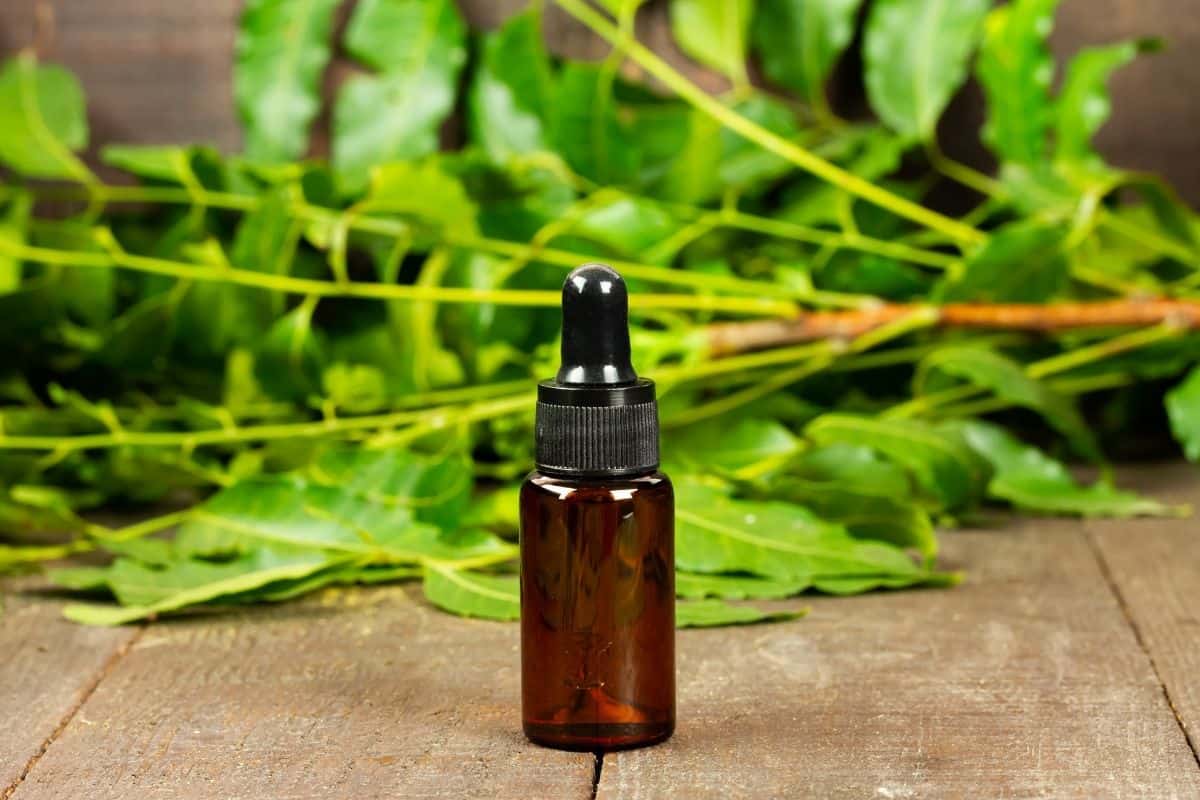
Do you have any tips for getting rid of pests? Are there any pests that we missed? Tell us below in the comments!

